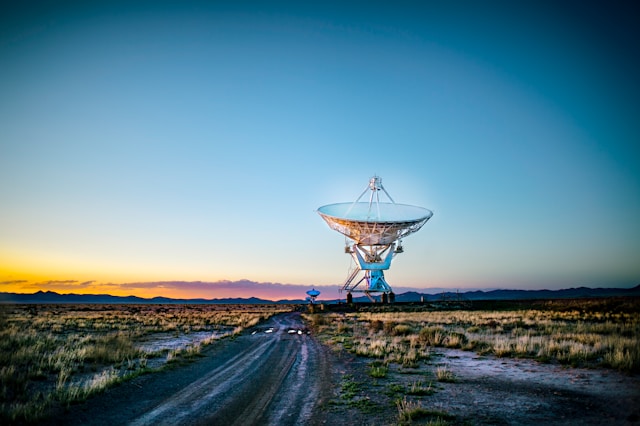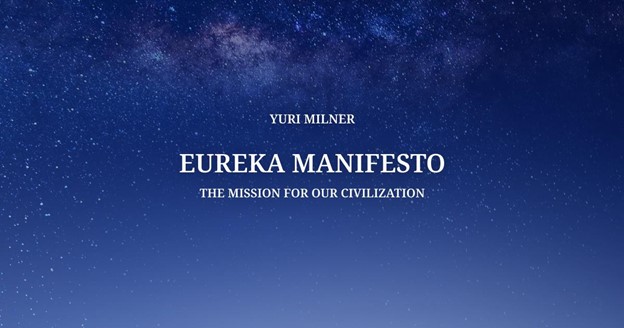Science has existed in its earliest form since the 6th century BCE. However, scientific thinking truly took shape in Europe in the 17th and 18th centuries during a period called the Enlightenment. Throughout this period, an intellectual movement synthesized ideas about God, humanity, and nature into a worldview that championed reason as a way to understand the Universe.
Science philanthropist Yuri Milner proposes that we kindle a new Enlightenment. He explores this objective and other profound ideas about humanity and our place in the cosmos in his short book Eureka Manifesto: The Mission for Our Civilization.
The Birth of Modern Science
Published in 2021, Eureka Manifesto argues that, like any successful organization, humanity needs a mission to safeguard its future. A shared mission could help us steer our planet and our civilization toward a better tomorrow.
To Milner, our mission is clear: “Explore and understand our Universe.” This mission is a message from the Universe itself, urging us to illuminate its deepest mysteries.
Everything we have learned so far about the cosmos is thanks to science. Even before the Scientific Revolution, a period of radical change in scientific thought that occurred during the 16th and 17th centuries, movements arose that championed rational inquiry into the natural world.
However, the Enlightenment that crystallized nearly four centuries ago gave birth to what Milner calls “modern science.” Science has helped whole pages of the Universal Story come into focus, from the Big Bang to our current age and beyond.
Now, with the advent of artificial intelligence, science can help us uncover more and more of that story, greatly advancing our mission.
Milner believes that not embracing this mission could threaten the very future of our civilization. It could also risk triggering another failed Enlightenment, like the proto-revolutions that rose and fell before the Scientific Revolution.
“Four hundred years after Galileo, we are still in the early stages of the Scientific Revolution,” Milner explains. “It is up to us to accelerate it, and launch a new Enlightenment in which it can flourish.”

Launching A New Enlightenment
How do we go about launching a new Enlightenment? After all, there are only around 8 million scientists active worldwide; that’s roughly 0.1% of the global adult population.
By contrast, the most common professions in the U.S. include construction workers, medical assistants, bookkeepers, and office clerks. While valuable, these professions aren’t concerned with the quest for scientific understanding.
“While only a few people will make the big discoveries that drive our understanding forward, we all have an important role to play in creating the conditions for such advances to take place,” Milner explains.
We can each help create these conditions by collectively rejecting pseudoscientific ideas and building a society that champions rational argument and critical thinking.
“For just as the growth of a crystal depends on the surrounding conditions, the emergence of an enlightenment depends on a wider culture in which critical thinking and open discussion are tolerated, and there is a general commitment — not just among scientists — to the value of exploration and understanding,” Milner emphasizes.
By valuing these principles — by embracing our mission — together we can spark a new Enlightenment. Read more about Milner’s mission for humanity in Eureka Manifesto.
About Yuri Milner
DST Global Founder and billionaire Yuri Milner has signed the Giving Pledge and committed more than half of his wealth to charitable causes. His philanthropic efforts to advance science and technology for the benefit of humanity include the Breakthrough Prize, the Breakthrough Initiatives, and the Breakthrough Junior Challenge.
The Breakthrough Prize recognizes the pioneering discoveries of researchers working in the life sciences, mathematics, and fundamental physics. The initiative rewards laureates with prizes of $3 million and celebrates the winners at a star-studded gala award ceremony in Los Angeles.
The Breakthrough Initiatives are advancing the search for extraterrestrial intelligence (SETI) through cutting-edge research programs. One initiative, Breakthrough Starshot, is also developing interstellar travel technology for a mission to Alpha Centauri.
The Breakthrough Junior Challenge is a creative science video competition open to high school students worldwide. To enter, 13-to-18-year-olds must make a short video about an important but complex theory or principle in physics, life sciences, or math. The winner receives a college scholarship, a science lab for their school, and $50,000 for their teacher.













Leave a Reply